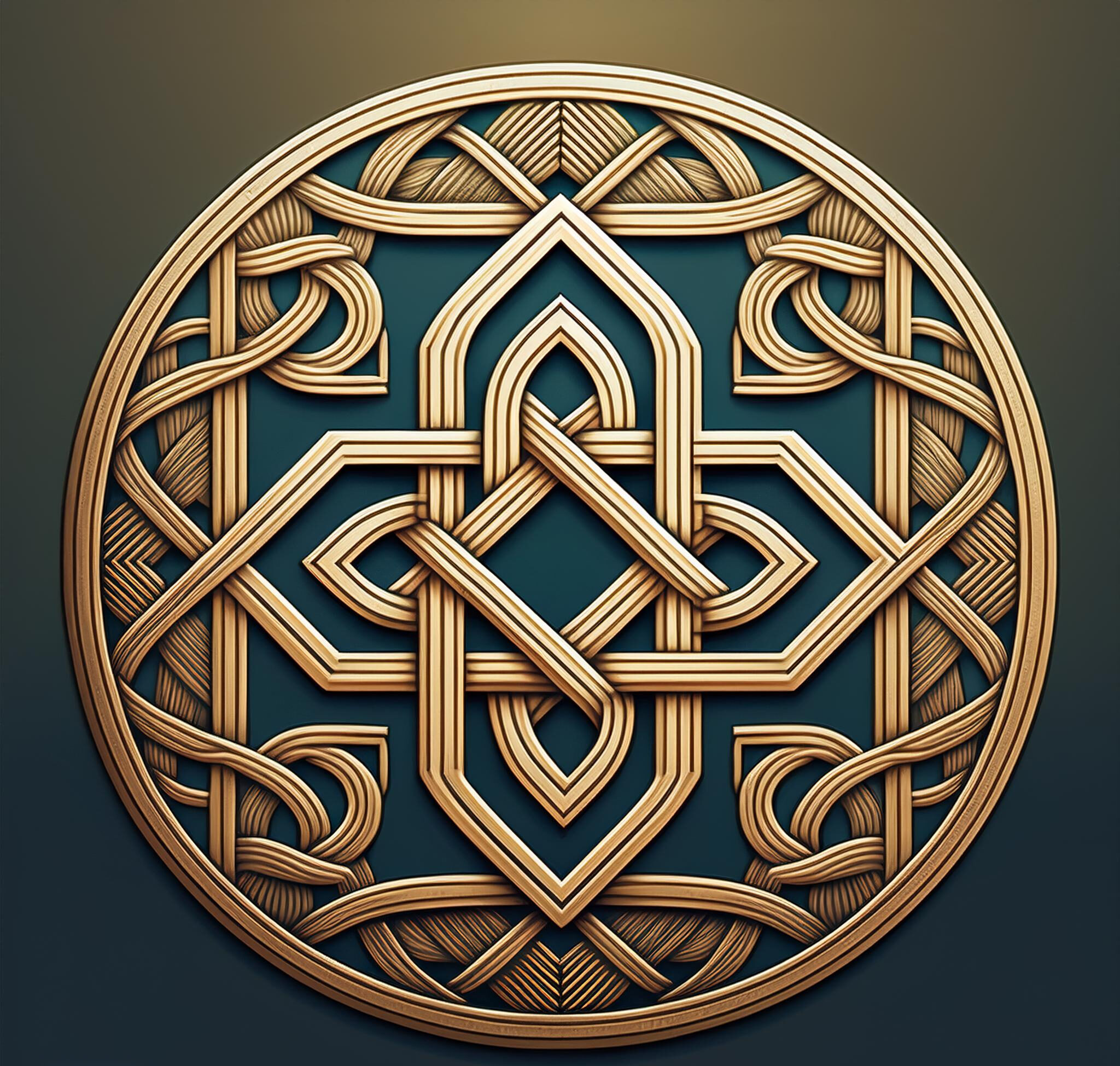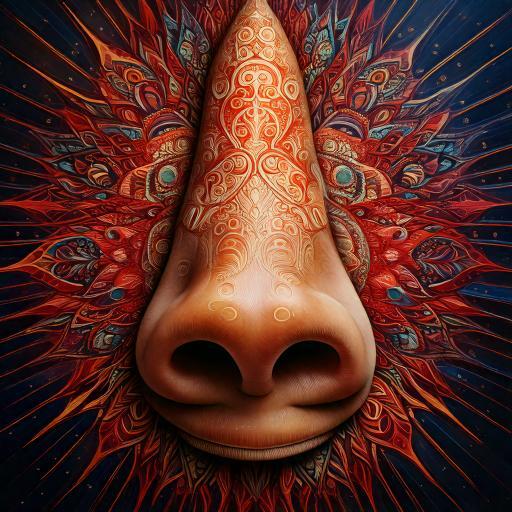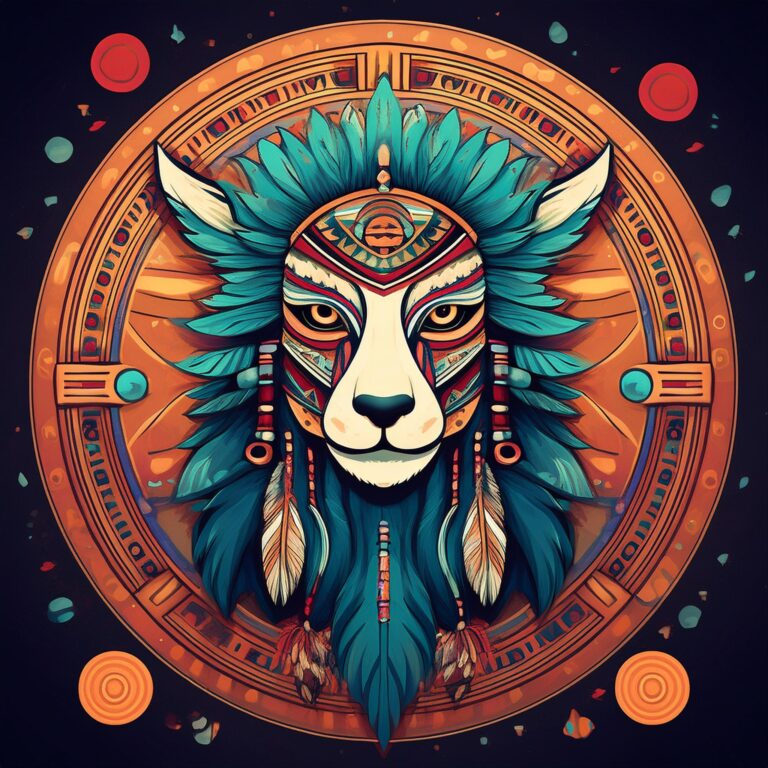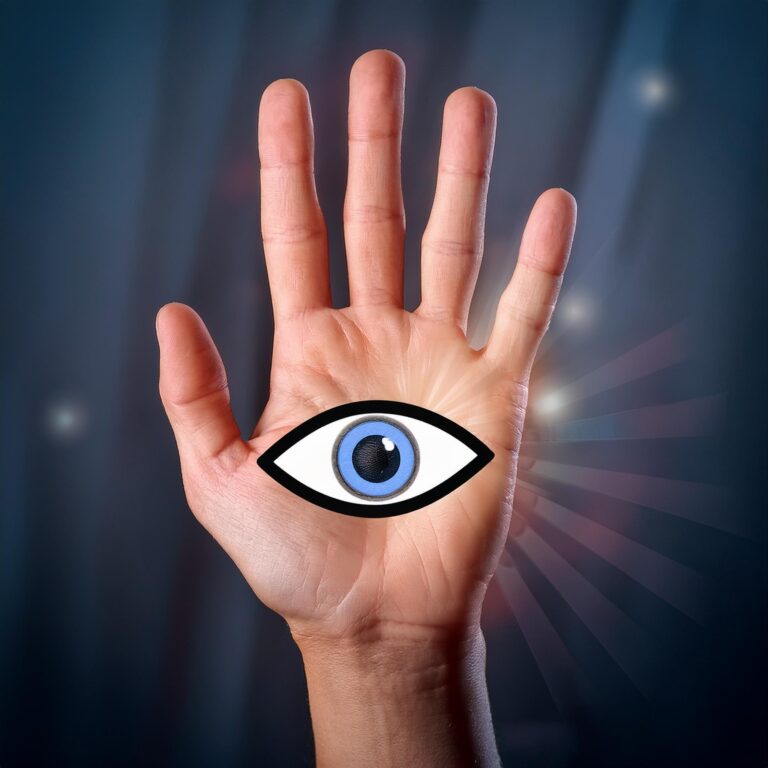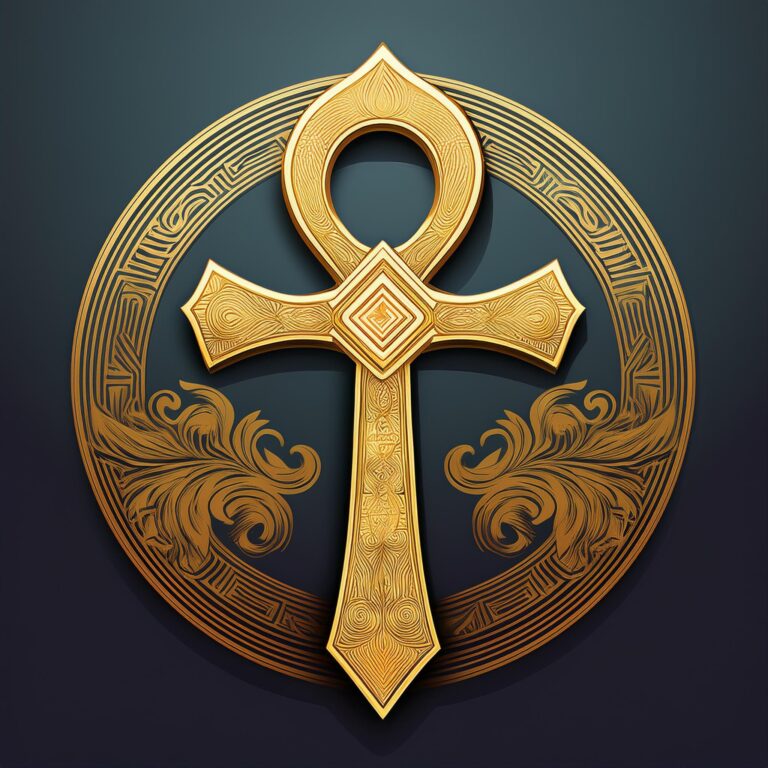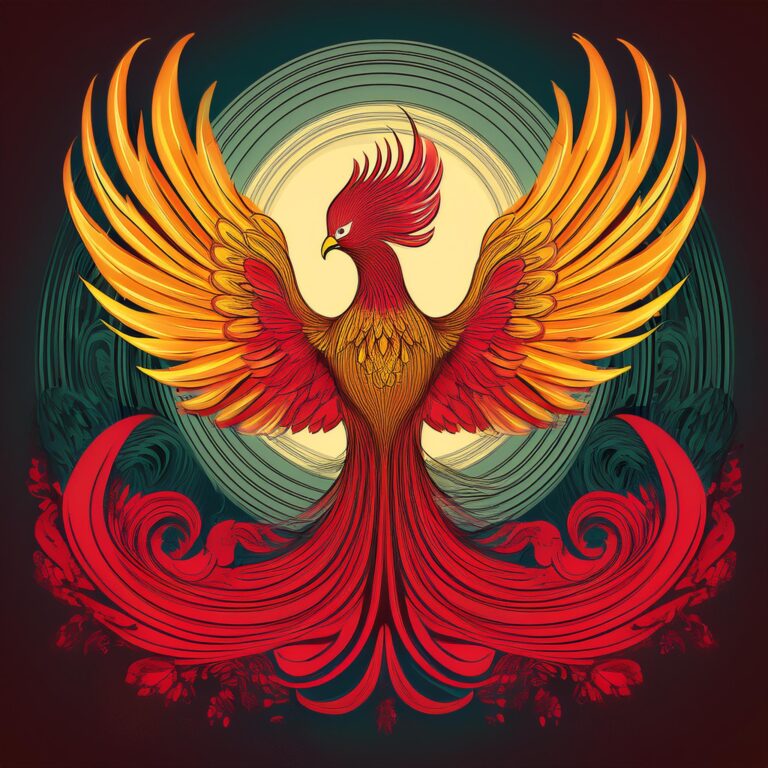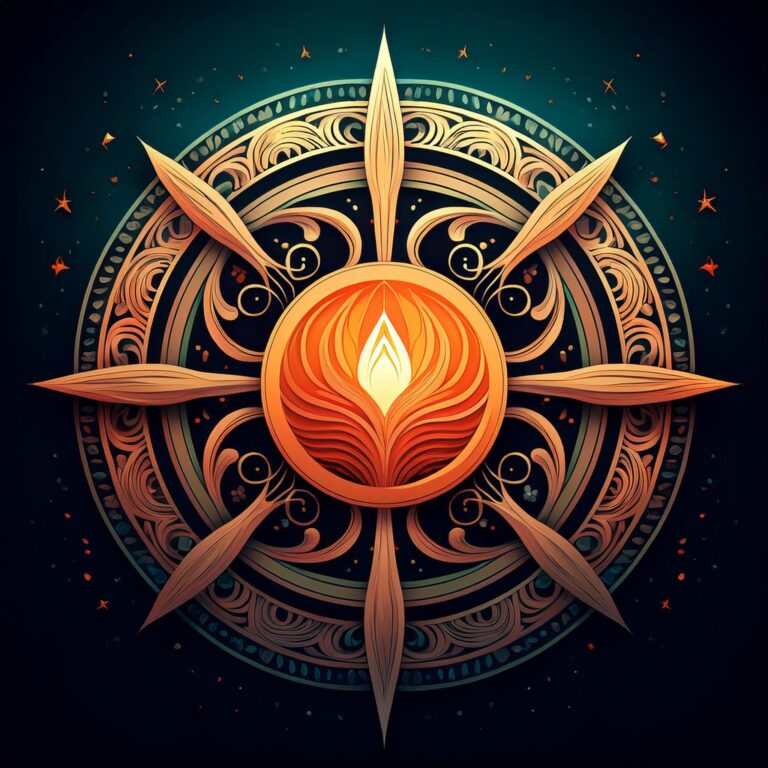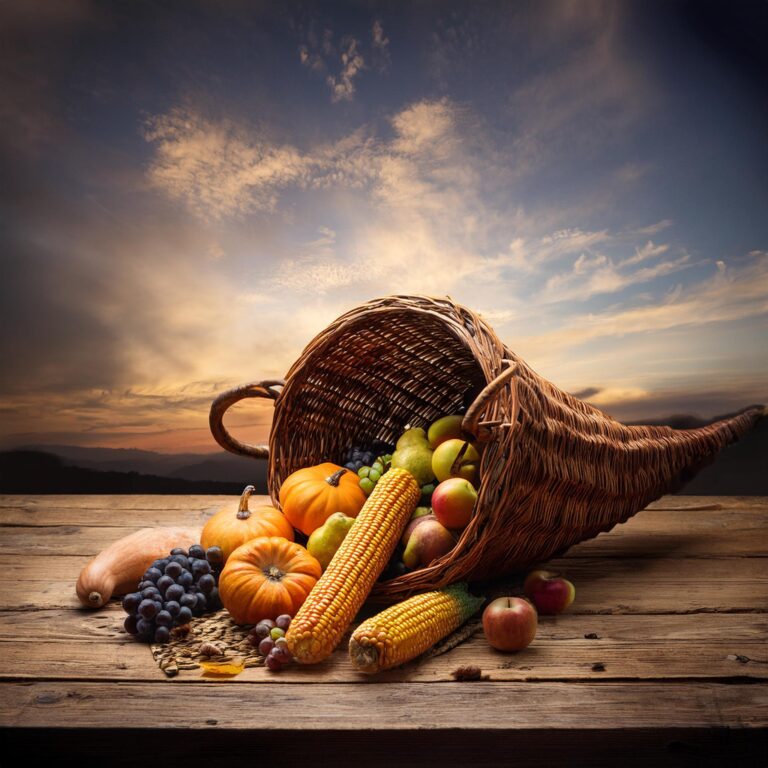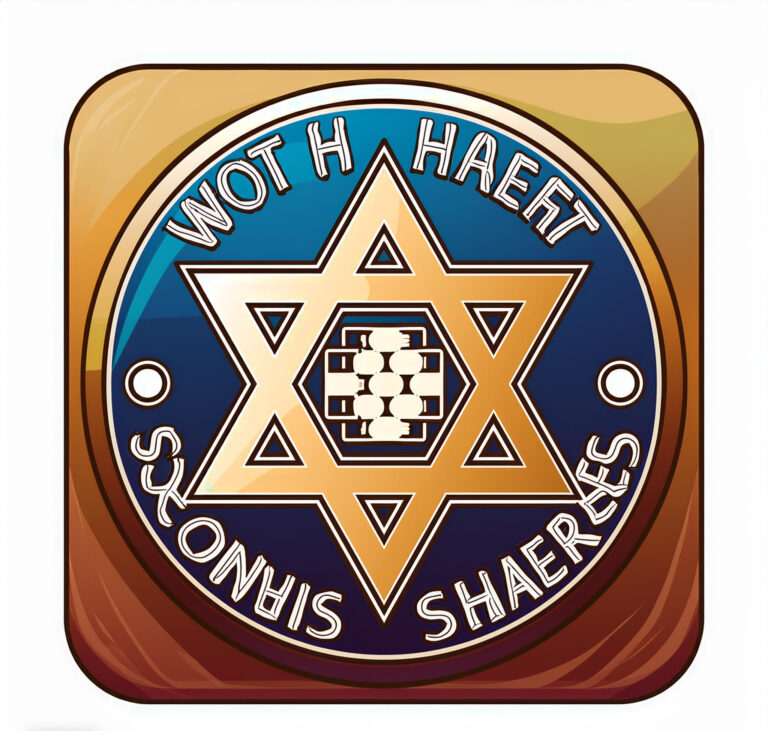Celtic knots, often recognized by their intricate and endless loops, are symbols deeply rooted in the history and culture of the Celts. These knots, also known as “endless knots” due to their continuous paths, have fascinated people for centuries with their mesmerizing patterns and profound meanings. But what exactly is a Celtic knot, and why has it become such a powerful symbol?
At its core, a Celtic knot is a decorative design that consists of interlacing lines that weave around one another without a clear beginning or end. This continuous loop is often interpreted as a representation of eternity, whether it be in life, love, or spiritual growth. The Celts, a group of ancient tribes from Western Europe, used these knots in various forms of art, from jewelry to manuscripts, to convey complex ideas and beliefs.
Celtic knots are not merely ornamental; they hold significant symbolic value. Each pattern tells its own story, often linked to concepts like unity, balance, and the interconnectedness of life. For example, the famous triquetra, or “trinity knot,” is often associated with themes of unity in diversity, such as the Holy Trinity in Christianity or the three stages of life in Celtic tradition.
In this article, we will explore the history, symbolism, and various types of Celtic knots, shedding light on the rich cultural heritage they represent. Whether you’re drawn to their aesthetic beauty or intrigued by their deeper meanings, Celtic knots offer a unique window into the ancient world of the Celts and their timeless traditions.
The History and Origins of Celtic Knots
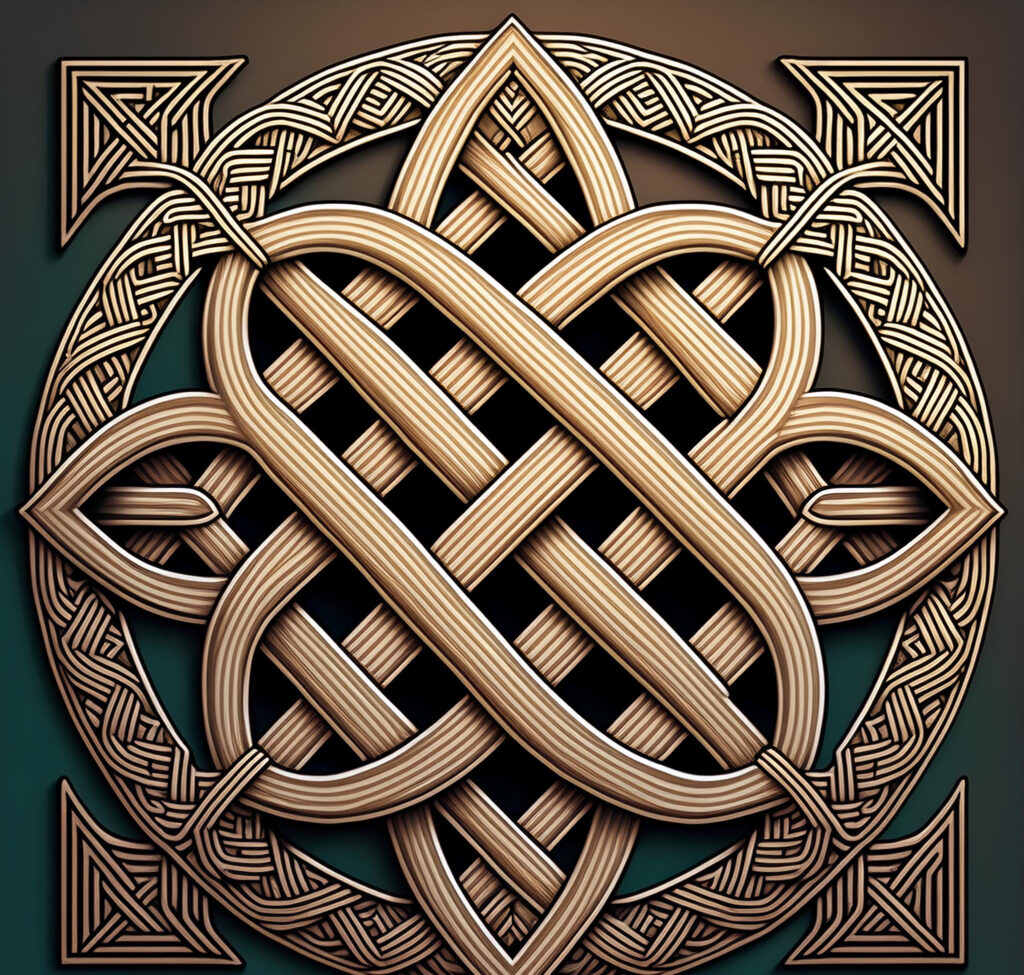
The history of Celtic knots is as intricate and enduring as the designs themselves. These beautiful patterns have been part of the Celtic culture for over a thousand years, representing a fusion of art, spirituality, and symbolism that continues to captivate people today. Among the various designs, the Trinity Knot stands out as a profound symbol, embodying the interconnectedness of mind, body, and spirit, and reflecting the deep spiritual resonance that Celtic knots have held throughout history.
The origins of Celtic knots can be traced back to the early days of Celtic civilization, which flourished in Europe during the Iron Age. The Celts, known for their rich oral traditions and skilled craftsmanship, were among the first to incorporate knotwork into their artwork. Early examples of Celtic knots can be found in stone carvings, metalwork, and pottery, dating back to around the 3rd and 4th centuries AD.
As Christianity spread throughout the Celtic lands, particularly in Ireland and Scotland, the use of knotwork became even more prevalent. Monks in monasteries began to integrate these intricate designs into illuminated manuscripts, the most famous of which is the Book of Kells. This masterpiece, created around 800 AD, is filled with elaborate knotwork that adorns its pages, reflecting the blend of Christian symbolism and ancient Celtic art.
Celtic knots are characterized by their continuous loops, symbolizing eternity and the cyclical nature of life. Unlike other forms of knotwork found in different cultures, Celtic knots typically have no beginning or end, representing the interconnectedness of all things. This concept was central to the Celtic worldview, where everything in the universe was believed to be interconnected and in constant flow.
Over time, Celtic knots became a defining feature of Celtic identity, not just in art, but in everyday life. They adorned everything from jewelry and clothing to weapons and religious artifacts. The designs evolved, incorporating influences from other cultures through trade and conquest, yet always retaining their distinct Celtic essence.
Today, Celtic knots continue to be celebrated as symbols of heritage, spirituality, and artistic expression. They are found in modern designs, from tattoos and jewelry to logos and home décor, serving as a timeless reminder of the Celts’ profound connection to the mysteries of life and the universe.
Types of Celtic Knots
Celtic knots are renowned for their intricate and endless designs, each carrying its own unique symbolism and meaning. While the basic concept of interwoven loops is consistent, the variations in patterns have led to the development of distinct types of Celtic knots, each with its own story to tell. Below are some of the most well-known types:
1. Triquetra (Trinity Knot)
The triquetra, often referred to as the “trinity knot,” is one of the most recognizable Celtic symbols. Comprising three interconnected loops, this knot is traditionally associated with the concept of three-in-one. In Celtic culture, it represents the trinity of life—birth, death, and rebirth—as well as the three domains of earth, sea, and sky. With the advent of Christianity, the triquetra took on additional significance, symbolizing the Holy Trinity: Father, Son, and Holy Spirit.
2. The Celtic Cross
The Celtic cross combines a traditional Christian cross with a circle, representing the union of divine and earthly elements. The arms of the cross are often adorned with intricate knotwork, symbolizing the eternal nature of God’s love. This symbol is a powerful representation of faith and is commonly found in ancient stone crosses across Ireland and Scotland.
3. The Dara Knot
The Dara knot is inspired by the ancient oak tree, a sacred symbol in Celtic culture. The word “Dara” comes from the Gaelic word “doire,” meaning “oak tree.” This knot represents strength, wisdom, and endurance. The interwoven design reflects the roots of the oak, symbolizing the connection between inner strength and external challenges.
4. The Shield Knot
The shield knot, with its square or circular shape, was traditionally used as a protective symbol. It was often placed on shields, armor, and clothing to ward off evil spirits and bring protection in battle. The design is simple yet powerful, with four distinct corners representing the four cardinal directions or the four elements: earth, air, fire, and water.
5. The Lover’s Knot
The lover’s knot, also known as the “Josephine knot” or “Eternity knot,” is a symbol of eternal love and friendship. Its interwoven loops signify the unbreakable bond between two individuals. This knot is often found in Celtic jewelry, particularly in wedding rings and engagement rings, as a symbol of lifelong commitment.
6. The Spiral Knot
The spiral knot is another ancient Celtic symbol, representing the journey of life and the cycles of nature. The continuous loop of the spiral suggests growth, expansion, and cosmic energy. This knot is often associated with spiritual growth and the connection between the physical and spiritual realms.
7. The Celtic Butterfly Knot
The Celtic butterfly knot is a more recent design, inspired by the ancient patterns but with a modern twist. The butterfly, a symbol of transformation and new beginnings, is beautifully represented through intricate knotwork, making it a popular choice for those seeking symbols of personal growth and change.
8. The Celtic Dragon Knot
The Celtic dragon knot is one of the most powerful symbols in Celtic mythology, representing wisdom, strength, and protection. The dragon is often depicted as a guardian figure, and its knotwork design is used to invoke these qualities. This knot is a symbol of the mighty dragon’s eternal nature and its role as a protector of the land and people.
Symbolism Behind Celtic Knots
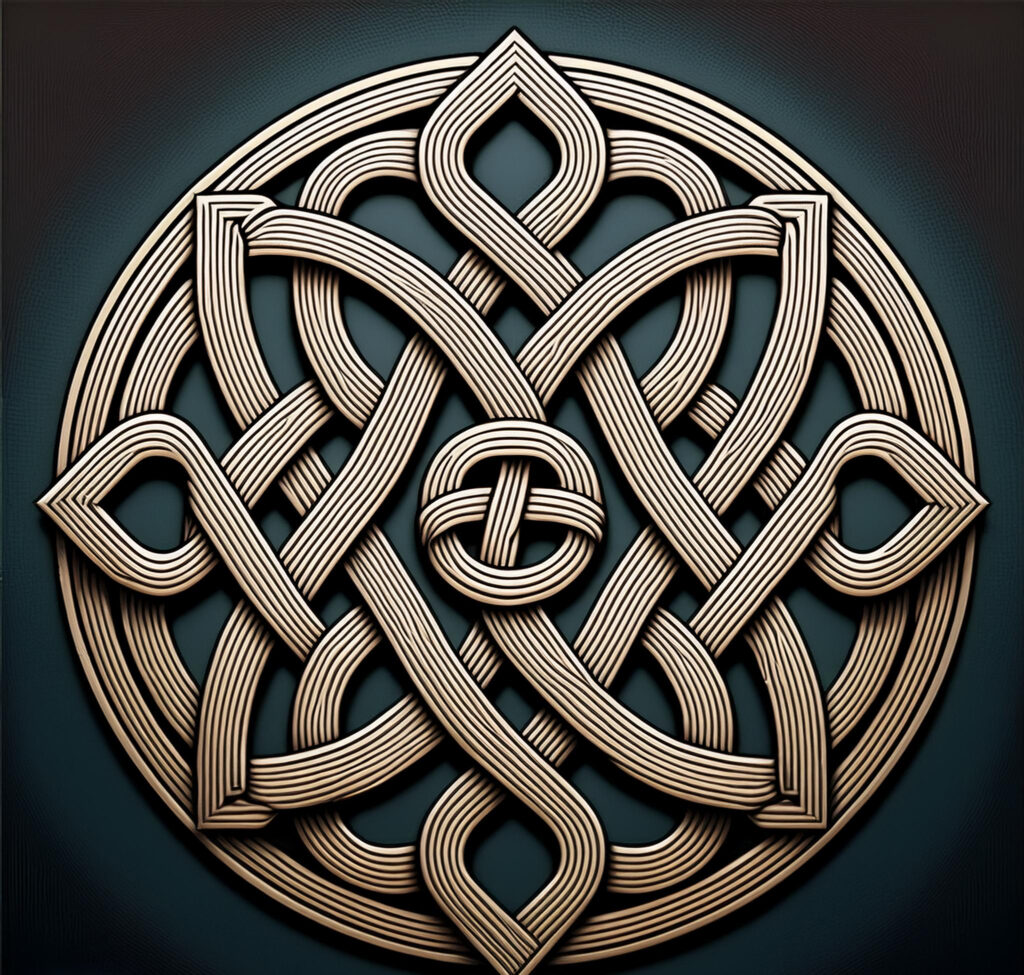
Celtic knots are more than just intricate designs; they are rich with symbolism that reflects the beliefs and philosophies of the ancient Celts. These knots, with their unbroken loops and complex patterns, serve as powerful representations of life, spirituality, and the natural world. The symbolism behind Celtic knots is both profound and multifaceted, revealing deep insights into the Celtic way of thinking.
Eternity and Infinity
At the heart of Celtic knot symbolism is the concept of eternity. The endless loops of these knots have no clear beginning or end, symbolizing the eternal nature of life, love, and the universe. This idea of infinity is central to many Celtic beliefs, where the cycle of birth, death, and rebirth is seen as a continuous flow, much like the never-ending paths of the knots themselves.
Interconnectedness
Celtic knots also symbolize the interconnectedness of all things. The Celts believed that everything in the universe was connected, from the physical to the spiritual, from the natural to the supernatural. The intricate weavings of the knots represent this connection, illustrating how different elements of life are intertwined in a harmonious balance. This symbolism extends to human relationships, where the knots can represent the bonds between individuals, communities, and even between humanity and nature.
Spiritual Growth and Protection
Many Celtic knots are imbued with spiritual meaning, often associated with personal growth and protection. For example, the triquetra, or trinity knot, symbolizes spiritual unity and the balance of mind, body, and spirit. It is also a protective symbol, believed to shield the wearer from harm. Similarly, the Dara knot, inspired by the roots of the oak tree, represents strength and inner wisdom, providing a sense of grounding and resilience in the face of challenges.
Cycles of Life and Nature
The Celts were deeply connected to the natural world, and their knotwork often reflects the cyclical patterns of nature. The continuous loops of Celtic knots mirror the cycles of the seasons, the phases of the moon, and the rhythm of life itself. This symbolism is particularly evident in spiral knots, which represent growth, transformation, and the journey of life. The spiral’s unending path signifies the ever-changing yet eternal nature of the universe.
Unity and Duality
Celtic knots frequently embody the themes of unity and duality. The knots often consist of two or more intertwined strands, symbolizing the unity of opposites—such as life and death, day and night, or male and female. This duality reflects the Celtic understanding that harmony and balance are achieved through the union of contrasting forces. The lover’s knot, for instance, represents the eternal bond between two people, highlighting the unity of love and partnership.
Mystery and Magic
The intricate and often enigmatic designs of Celtic knots also convey a sense of mystery and magic. The Celts believed in the presence of the supernatural in everyday life, and their art often served as a gateway to the mystical realms. The complexity of the knots, with their hidden meanings and subtle symbolism, reflects this belief in the unseen forces that govern the world. Celtic knots are thus seen as symbols of the mysteries of life, the unknown, and the magical interplay of fate and destiny.
Celtic Knots in Art and Architecture
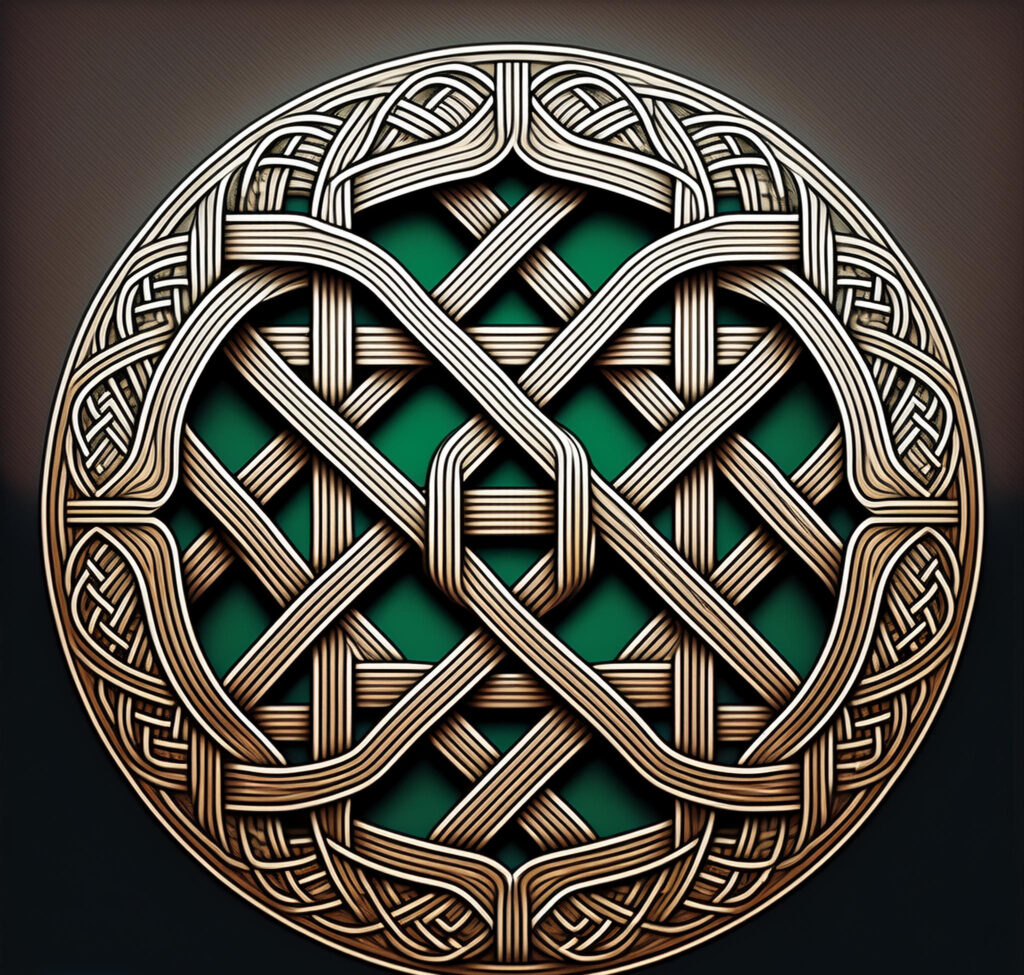
Celtic knots, with their intricate patterns and profound symbolism, have been a defining feature of Celtic art and architecture for centuries. These timeless designs, characterized by their interwoven loops and endless paths, can be found adorning everything from ancient stone carvings to modern-day buildings, serving as a testament to the enduring influence of Celtic culture.
The earliest examples of Celtic knots in art date back to the early medieval period, when these designs began to appear in illuminated manuscripts, metalwork, and stone carvings. The Book of Kells, an illuminated manuscript created by Celtic monks around 800 AD, is one of the most famous examples of Celtic knotwork in art. The intricate designs found in this manuscript, including elaborate knot patterns that fill the margins and decorate the text, showcase the artistry and spiritual significance of these symbols.
Celtic knots were also commonly used in stone carvings, particularly on standing stones and crosses. These carvings, found across Ireland, Scotland, and Wales, often featured knotwork alongside other Celtic symbols like spirals and animal motifs. The High Crosses of Ireland are a notable example, where the arms and shafts of the crosses are adorned with detailed knotwork, representing both religious devotion and the interconnectedness of life.
As Christianity spread through Celtic lands, the use of knotwork extended into architecture, particularly in the construction of churches and monasteries. The Celts infused their spiritual beliefs into the very fabric of these buildings, using Celtic knots to decorate arches, doorways, and windows. The intertwining patterns symbolized the eternal nature of the divine and the spiritual journey of the faithful.
One of the most iconic examples of Celtic knotwork in architecture is found in the Celtic crosses that dot the landscapes of Ireland and Scotland. These monumental stone crosses, some standing over 20 feet tall, are carved with intricate knot patterns that represent the union of heaven and earth. The circular shape of the cross, often filled with knotwork, is a powerful symbol of eternity and the cyclical nature of life.
The influence of Celtic knots has extended far beyond the ancient world, continuing to inspire artists and architects in modern times. In contemporary art, Celtic knots are often used to evoke a sense of heritage, spirituality, and connection to nature. Artists incorporate these designs into paintings, sculptures, and jewelry, blending traditional motifs with modern aesthetics to create works that resonate with today’s audiences.
In architecture, Celtic knots are sometimes used as decorative elements in buildings that seek to honor Celtic heritage or create a sense of timeless beauty. Modern buildings, particularly in regions with strong Celtic roots, may feature knotwork in their design, whether it’s in the form of intricate ironwork, stone carvings, or stained glass windows. These motifs serve as a bridge between the past and the present, connecting contemporary structures to the ancient traditions that shaped them.
Beyond formal architecture, Celtic knots are also commonly found in public art and private spaces. In urban areas with significant Celtic heritage, such as Dublin, Edinburgh, and Cardiff, you’ll often see Celtic knot designs in public sculptures, murals, and even street furniture. These elements add a cultural and historical dimension to the urban landscape, celebrating the rich legacy of the Celts.
In private homes, Celtic knots are often used in interior design, from intricate tile patterns to decorative wall hangings. These designs are popular not only for their aesthetic appeal but also for the meanings they carry—symbolizing unity, protection, and continuity. Whether in a traditional Celtic-style home or a modern setting, Celtic knots bring a sense of history, culture, and spirituality into the space.
How to Create Your Own Celtic Knot
Creating your own Celtic knot can be a rewarding way to connect with ancient traditions while expressing your creativity. Though the intricate designs might seem complex at first glance, with a little practice and patience, you can learn to craft these beautiful patterns yourself. Whether you’re looking to create a piece of art, a decorative element, or a personal symbol, the process of designing a Celtic knot is both meditative and fulfilling.
1. Understand the Basics of Celtic Knotwork
Before you begin, it’s important to understand the fundamental principles behind Celtic knots. These designs are characterized by continuous loops with no clear beginning or end, symbolizing eternity and interconnectedness. The basic elements of Celtic knotwork include:
- Interlacing Lines: The lines weave over and under each other, creating a pattern that flows continuously.
- Symmetry: Most Celtic knots are symmetrical, which adds to their visual appeal and symbolic meaning.
- Geometric Structure: The knots often follow a grid or geometric layout, which guides the placement of the lines and loops.
2. Gather Your Materials
To create your own Celtic knot, you’ll need the following materials:
- Graph Paper: This helps in maintaining symmetry and proportion in your design.
- Pencil and Eraser: A pencil allows you to sketch lightly and make adjustments as needed.
- Ruler: Useful for drawing straight lines and ensuring accuracy.
- Compass (Optional): If you plan to include circles or arcs in your design, a compass can be helpful.
- Ink Pen or Markers: For finalizing your design once you’re satisfied with the pencil sketch.
3. Start with a Simple Design
If you’re new to Celtic knotwork, it’s best to start with a simple design, such as a basic border or a single loop knot. Here’s how to begin:
- Draw a Grid: Start by drawing a grid on your graph paper. A 4×4 grid is a good starting point for beginners. The squares of the grid will serve as guides for your knot’s loops and intersections.
- Mark Key Points: On your grid, mark the key points where the lines will intersect or turn. For example, you can mark the center of each square or the points where the lines will cross over.
- Sketch the Loops: Begin by lightly sketching the loops of your knot. Start with one loop, and then add more, ensuring they interlace properly. Remember, each loop should pass over and under other lines, creating the characteristic weave of Celtic knots.
- Ensure Symmetry: As you add more loops, constantly check for symmetry. If you’re working on a square knot, make sure each side mirrors the other. This symmetry is crucial to achieving the harmonious look of a traditional Celtic knot.
- Refine Your Design: Once you’re satisfied with the basic structure, go over your lines to refine the shape and thickness of the loops. Make sure all overlaps are clear and that the design flows smoothly.
4. Experiment with Complex Patterns
As you gain confidence, you can experiment with more complex patterns and larger grids. You might try creating a triquetra, a more intricate border, or even your own unique design. Here are some tips for advancing your skills:
- Use Circular Grids: For designs like the triquetra or other circular knots, draw a circle or use a circular grid as a guide. This will help you maintain the roundness and symmetry of the design.
- Incorporate Additional Elements: You can add dots, spirals, or other symbols within the knot or around it to enhance the design’s complexity and meaning.
- Try Freehand Drawing: Once you’re comfortable with the basic techniques, try drawing your knots freehand without a grid. This allows for more fluidity and personal expression in your designs.
5. Finalize and Personalize Your Knot
After you’ve sketched your knot and refined the design, it’s time to finalize it. Go over your pencil lines with an ink pen or marker, making sure to maintain the smoothness and flow of the lines. Once the ink is dry, you can erase any remaining pencil marks.
If you wish, you can personalize your knot by adding color, shading, or additional decorative elements. Some artists choose to incorporate specific colors that have meaning in Celtic culture, such as green for nature, blue for the sky, or gold for spirituality.
6. Apply Your Knot to Various Projects
Now that you’ve created your Celtic knot, you can apply it to a variety of projects. Here are a few ideas:
- Digital Design: Digitize your knot and use it in graphic design projects, websites, or digital art.
- Jewelry Design: Use your knot design as a template for creating a pendant, bracelet, or ring.
- Artwork: Incorporate your knot into a larger piece of art, such as a painting, drawing, or mixed-media project.
- Home Décor: Transfer your knot design onto fabric, wood, or other materials to create unique home décor items like cushions, wall hangings, or coasters.
The Influence of Celtic Knots in Modern Culture
Celtic knots, with their intricate designs and deep symbolism, have become a prominent element in modern culture, extending far beyond their ancient origins. These timeless patterns are now seen in a variety of contexts, from fashion and art to popular media and spirituality, reflecting their enduring appeal and the way they connect the past with the present.
In the fashion world, Celtic knots are a popular choice in both clothing and jewelry. Whether in rings, necklaces, or bracelets, these designs often symbolize heritage, identity, and personal beliefs. For many, wearing a Celtic knot is a way to express a connection to Celtic ancestry or to embrace the symbolic meanings associated with these patterns, such as eternal love, spiritual unity, or protection.
Tattoos and body art are another area where Celtic knots have made a significant impact. The complex, interwoven patterns are ideal for tattoo designs, offering both aesthetic beauty and deep personal significance. People choose Celtic knot tattoos to symbolize interconnectedness, personal growth, or to carry a sense of protection and strength with them.
Celtic knots also continue to inspire artists and designers, appearing in a wide range of visual art forms, including paintings, sculptures, and digital art. These designs bring a touch of mysticism and historical significance to modern works, making them popular in home décor as well. Items like woven rugs, ceramics, and wall hangings featuring Celtic knots add an element of timeless elegance to any space.
In popular media, Celtic knots are often used to evoke themes of mystery, magic, and ancient wisdom, especially in the fantasy genre. They appear in films, television shows, and video games that explore Celtic mythology or create fantasy worlds, symbolizing ancient powers or the interconnectedness of characters’ fates.
The spiritual significance of Celtic knots has also found a place in modern spirituality and New Age practices. These symbols are often used in meditation or as tools for spiritual growth, representing the infinite and eternal. The continuous, unbroken lines of the knots are seen as symbols of the interconnectedness of all life and the cycles of the universe.
Celtic cultural revivals and festivals, particularly in regions like Ireland, Scotland, and Wales, have also contributed to the popularity of these designs. Celtic knots are often featured prominently in the logos, banners, and crafts at these events, serving as a celebration of cultural identity and continuity.
Celtic knots have seamlessly woven themselves into the fabric of modern culture, offering a rich blend of history, symbolism, and aesthetic appeal. Whether in fashion, art, spirituality, or popular media, these ancient designs continue to inspire and connect people across the world, bridging the gap between the past and the present with their timeless beauty and meaning.
Reader’s Questions on Celtic Symbols
Celtic symbols have long fascinated people with their intricate designs and deep meanings, leading to a wealth of questions from those eager to learn more. Below, we address some of the most common inquiries from our readers about Celtic symbols, shedding light on their origins, significance, and how they continue to resonate in modern times.
1. What is the meaning of the Triquetra?
The Triquetra, also known as the Trinity Knot, is one of the most recognized Celtic symbols. It consists of three interlocking loops, often representing the interconnectedness of mind, body, and spirit or the three elements of nature: earth, water, and sky. In Christian contexts, it symbolizes the Holy Trinity—Father, Son, and Holy Spirit. The Triquetra is often seen as a symbol of eternity and unity.
2. Are Celtic symbols exclusively Irish?
While Celtic symbols are strongly associated with Irish culture, they are not exclusive to Ireland. The Celts were a widespread group of tribes that inhabited large parts of Europe, including present-day Ireland, Scotland, Wales, and parts of France and Spain. As a result, many Celtic symbols are found throughout these regions, each with its own local variations and meanings.
3. What does the Dara Knot represent?
The Dara Knot, inspired by the roots of the oak tree, symbolizes strength, stability, and endurance. The name “Dara” comes from the Irish word “doire,” meaning “oak tree,” which was highly revered in Celtic culture as a symbol of wisdom and resilience. The intricate loops of the Dara Knot reflect the strong, interwoven roots of the oak, making it a powerful emblem of grounding and inner strength.
4. How were Celtic symbols used in ancient times?
Celtic symbols were used in a variety of ways in ancient times, from religious and spiritual practices to decoration and identification. They were carved into stones, etched onto weapons and jewelry, and used in rituals to invoke protection, blessings, and guidance from the gods. Many symbols also served as clan emblems, marking territories and asserting identity and heritage.
5. What is the significance of the Spiral in Celtic symbolism?
The spiral is one of the oldest symbols in Celtic culture, often associated with growth, change, and the cycle of life. It represents the journey from the inner self to the outer world and the constant movement of life and energy. Spirals are commonly found in ancient Celtic art and continue to be a powerful symbol of personal and spiritual transformation.
6. Can Celtic symbols be used in modern-day rituals?
Yes, many people incorporate Celtic symbols into modern-day rituals and spiritual practices. These symbols can be used for meditation, as talismans, or in ceremonies to invoke specific qualities like protection, wisdom, or healing. Whether rooted in tradition or adapted for contemporary practices, Celtic symbols continue to hold deep meaning and significance for many.
7. What does the Awen symbol stand for?
The Awen symbol, represented by three rays of light, is a symbol of inspiration and divine illumination in Celtic Druidic tradition. The three rays are often interpreted as representing the harmony between opposites—male and female, light and dark, active and passive—while the central ray symbolizes balance and unity. The Awen is a powerful emblem of creativity, inspiration, and spiritual enlightenment.
Similar Symbols to Celtic Knots
Celtic knots are renowned for their intricate designs and deep symbolism, but they are not the only symbols with such characteristics. Across various cultures, other patterns share similarities with Celtic knots in terms of design, meaning, or cultural significance. Below, we explore some of these symbols and their connections to the rich tradition of Celtic knotwork.
1. Nordic Valknut
The Valknut is a symbol composed of three interlocking triangles, often associated with the Norse god Odin and the afterlife. Like Celtic knots, the Valknut represents interconnectedness and eternity, with its continuous lines symbolizing the link between life, death, and the divine.
2. Endless Knot (Tibetan Buddhism)
The Endless Knot, also known as the Eternal Knot, is a significant symbol in Tibetan Buddhism. It features a looped design with no beginning or end, representing the endless cycle of life, death, and rebirth. This concept of continuity and the interconnectedness of all things closely aligns with the symbolism found in Celtic knots.
3. Slavic Kolovrat
The Kolovrat is a Slavic symbol representing the sun and the cycle of life. It consists of eight rays arranged in a circular pattern, symbolizing the eternal nature of life, the cyclical nature of time, and the connection between the physical and spiritual worlds. Like Celtic knots, the Kolovrat is often associated with protection and cosmic order.
4. Triquetra
The Triquetra, while a Celtic symbol, is also found in other cultures, such as in Norse and Christian art. It represents the unity of three elements, such as earth, water, and sky, or mind, body, and spirit. Its interwoven design shares the same endless, looping style seen in many Celtic knots.
5. Chinese Mystic Knot
The Chinese Mystic Knot, often associated with luck and prosperity, features an intricate, endless loop design. It is believed to bring longevity, harmony, and protection. The continuous, unbroken pattern of the Mystic Knot bears a visual resemblance to Celtic knotwork, emphasizing the idea of eternal life and interconnectedness.
Table: Similar Symbols to Celtic Knots
| Symbol | Name | Cultural Origin | Meaning |
|---|---|---|---|
| Valknut | Nordic Valknut | Norse | Interconnectedness, life, death, and the divine |
| Endless Knot | Endless Knot | Tibetan Buddhism | Eternal cycle of life, death, and rebirth |
| Kolovrat | Slavic Kolovrat | Slavic | Sun, life cycle, cosmic order, protection |
| Triquetra | Triquetra | Celtic, Norse, Christian | Unity, eternity, interconnectedness |
| Mystic Knot | Chinese Mystic Knot | Chinese | Luck, prosperity, longevity, harmony |
These symbols, while originating from different cultures, share common themes with Celtic knots, such as the idea of eternity, interconnectedness, and the cyclical nature of life. They each carry their own unique meanings and cultural significance, yet their visual and symbolic similarities highlight the universal nature of these concepts across human history.
FAQ on Celtic Knots
Celtic knots are surrounded by a rich history and deep symbolism, making them a subject of great interest and curiosity. Below, we answer some frequently asked questions about these intricate designs, providing insights into their meanings, origins, and uses.
Celtic knots are intricate, interwoven patterns that have no beginning or end, symbolizing eternity, interconnectedness, and the cycle of life. They are often found in ancient Celtic art, including manuscripts, stone carvings, and jewelry, and continue to be popular in modern designs.
Celtic knots carry various meanings depending on their design. Generally, they symbolize eternity, unity, and the interconnectedness of life and the universe. Specific knots can also represent concepts like love, protection, and spiritual growth.
Celtic knots originated with the ancient Celts, a group of tribal societies in Iron Age and Medieval Europe. These designs were particularly prominent in regions like Ireland, Scotland, and Wales, and are often associated with early Christian art in these areas.
Yes, Celtic knots are widely used in modern designs, including jewelry, tattoos, and home décor. They continue to be a popular choice for those who want to express their cultural heritage, personal beliefs, or simply appreciate the beauty of these timeless patterns.
Celtic knots are unique in their continuous, unbroken loops that have no start or finish. This distinguishes them from other knot symbols, which may have distinct beginnings and ends or represent different cultural meanings.
While Celtic knots are deeply rooted in Celtic culture, they have become a universal symbol appreciated by people around the world. Many use them in personal designs to reflect their own interpretations or to honor Celtic heritage.
Some common types of Celtic knots include the Trinity Knot (Triquetra), the Dara Knot, and the Lover’s Knot. Each type has its own specific meaning and symbolism, often connected to themes of love, strength, and eternity.
Creating a Celtic knot involves a methodical process of drawing interlacing patterns that loop around each other. Traditionally, these were carved into stone or drawn in manuscripts, but today they can be crafted in various mediums, including metalwork, textiles, and digital designs.
The Trinity Knot, or Triquetra, is one of the most recognizable Celtic symbols. It represents the unity of three elements, such as mind, body, and spirit, or the Christian Holy Trinity of Father, Son, and Holy Spirit. Its endless design emphasizes the idea of eternal life and unity.
While many Celtic knots are found in religious contexts, especially in early Christian art, they are also used in secular designs. They appear in a wide range of cultural artifacts, including jewelry, clothing, and even tattoos, where they carry various personal and spiritual meanings.

I’m the editor at SymbolsSays, where I explore the deeper meanings of symbols in mythology, art, literature, and psychology. My goal is to provide insights into how symbols influence our lives and connect us to our past.
